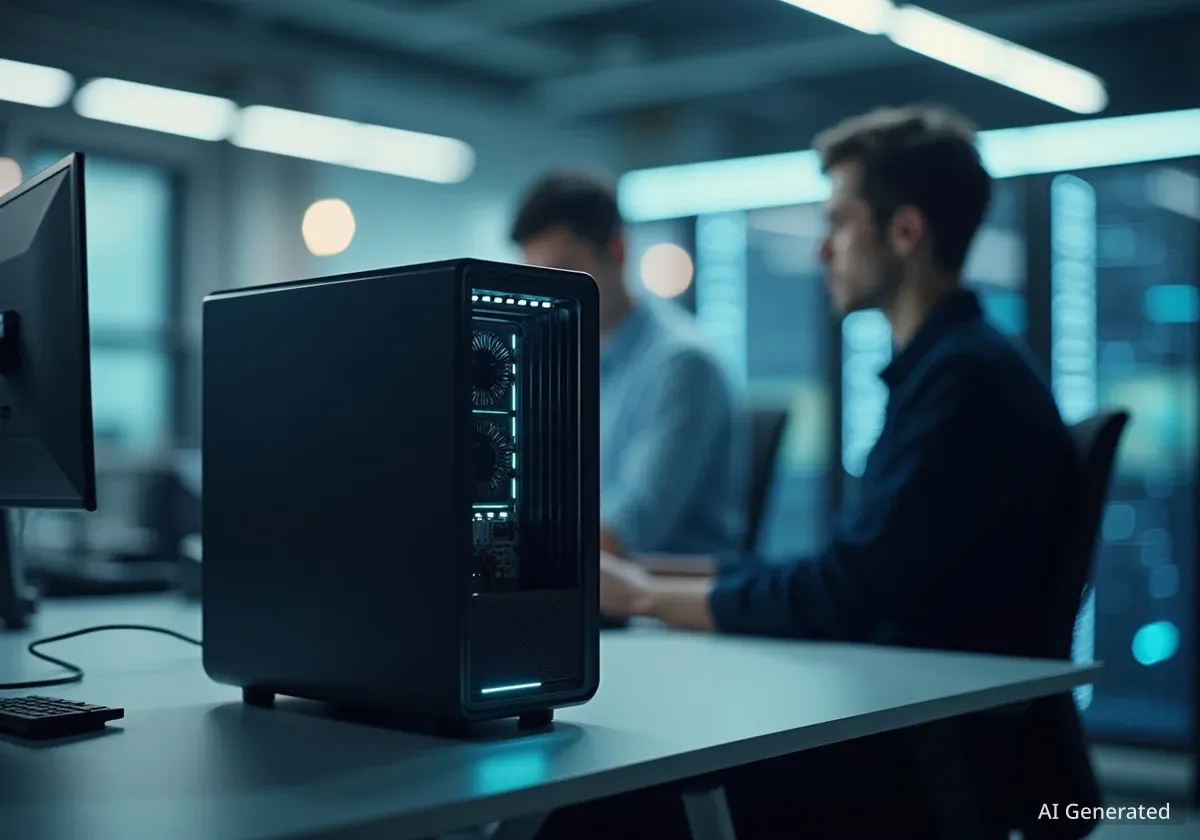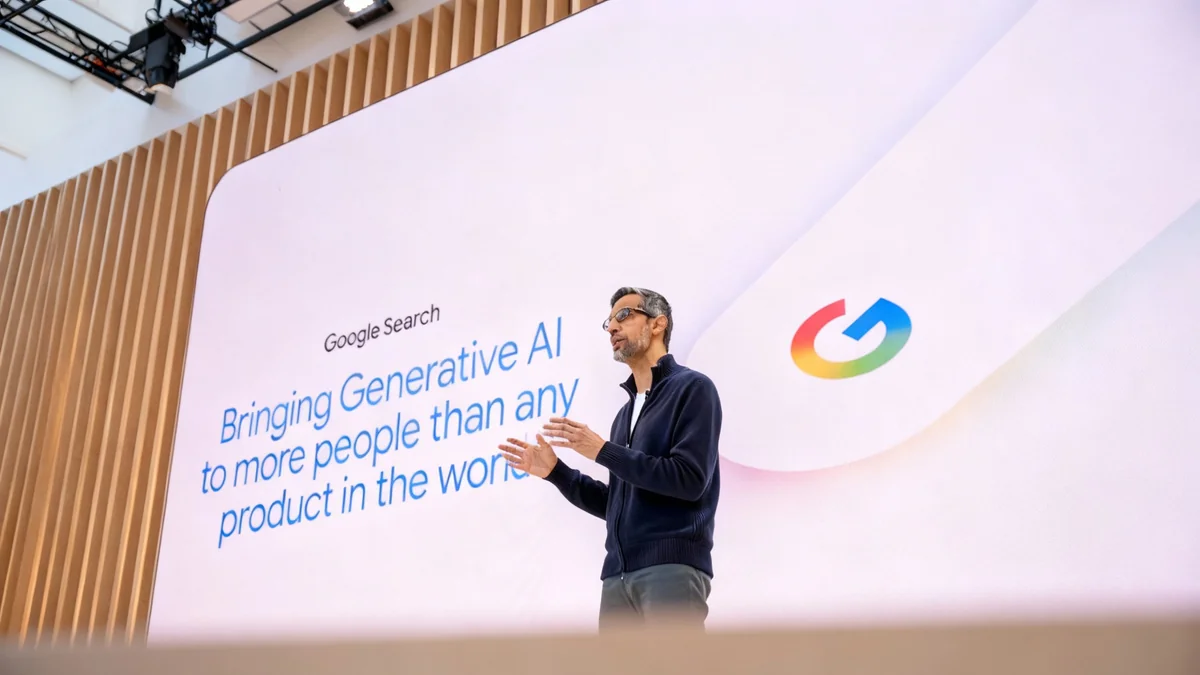NVIDIA announced on October 13, 2025, that it has begun shipping the DGX Spark, a compact AI supercomputer designed for a desktop environment. The new system aims to provide developers with the necessary power for advanced artificial intelligence workloads locally, eliminating the need to rely on remote data centers or cloud infrastructure. The launch was marked by NVIDIA CEO Jensen Huang personally delivering one of the first units to Elon Musk at SpaceX.
Key Takeaways
- NVIDIA is now shipping the DGX Spark, described as the world's smallest AI supercomputer, in a desktop form factor.
- The system delivers one petaflop of AI performance and 128GB of unified memory, built on the NVIDIA Grace Blackwell architecture.
- It is designed for AI developers to run and fine-tune large AI models directly on their desks.
- Major hardware partners including Dell, HP, Lenovo, and others will offer DGX Spark systems starting October 15.
Bridging the Gap for AI Developers
The development of sophisticated artificial intelligence models has increasingly strained the capabilities of standard personal computers and workstations. Many developers face limitations in memory and processing power, which forces them to move their projects to larger, often shared, computing environments.
NVIDIA's DGX Spark addresses this challenge by introducing a new category of computer. It is engineered to deliver the performance of a supercomputer within a device small enough to fit in an office or lab. This allows developers to handle complex AI tasks, such as fine-tuning models with up to 70 billion parameters, without leaving their local workstation.
The system also supports inference on AI models with as many as 200 billion parameters. According to NVIDIA, this local processing power is crucial for creating AI agents and running complex software stacks efficiently and securely.
Historical Context: The DGX Legacy
The launch of DGX Spark echoes a significant moment in AI history. In 2016, NVIDIA CEO Jensen Huang delivered the first DGX-1 supercomputer to a team at OpenAI, which included Elon Musk. That initial system played a role in the research that eventually led to the development of ChatGPT, a technology that accelerated the modern AI revolution.
Technical Architecture and Performance
The DGX Spark is built upon NVIDIA's Grace Blackwell architecture, which integrates several key technologies into a single, cohesive system. This design is intended to provide a seamless and powerful platform for AI development right out of the box.
Core Components
At the heart of the DGX Spark is the NVIDIA GB10 Grace Blackwell Superchip. This component combines NVIDIA's GPU and CPU technologies to provide high-performance computing. The system's 128GB of unified, coherent memory is a critical feature, allowing the CPU and GPU to access the same pool of memory without delays.
This is facilitated by NVIDIA NVLink-C2C interconnect technology, which provides a high-bandwidth connection between the processor cores. NVIDIA states this connection offers five times the bandwidth of the fifth-generation PCIe standard, significantly reducing data bottlenecks.
Performance at a Glance
- AI Performance: Up to 1 petaflop
- Memory: 128GB of unified CPU-GPU memory
- Architecture: NVIDIA Grace Blackwell
- Networking: NVIDIA ConnectX-7 with 200 Gb/s speed
- Interconnect: NVIDIA NVLink-C2C technology
Networking is handled by the NVIDIA ConnectX-7, enabling data transfer speeds of up to 200 Gb/s. This ensures that the system can handle large datasets and communicate effectively with other devices on a network.
Software Ecosystem and Industry Adoption
Hardware is only one part of the equation for AI development. The DGX Spark comes with the full NVIDIA AI software stack preinstalled, enabling developers to begin their work immediately. This includes access to CUDA libraries, models, and NVIDIA NIM microservices.
These tools allow for a range of local workflows. For example, developers can customize image generation models like Black Forest Labs' FLUX.1, create vision-based search agents using the NVIDIA Cosmos model, or build custom chatbots with models such as Qwen3, which has been optimized for the DGX Spark platform.
"In 2016, we built DGX-1 to give AI researchers their own supercomputer," said Jensen Huang, founder and CEO of NVIDIA. "With DGX Spark, we return to that mission — placing an AI computer in the hands of every developer to ignite the next wave of breakthroughs."
A broad coalition of companies and research institutions received early access to DGX Spark to test and optimize their software. Early adopters include major tech companies like Google, Meta, and Microsoft, as well as popular developer tool providers such as Docker, Hugging Face, and JetBrains.
Research organizations are also exploring the system's capabilities. Kyunghyun Cho, a professor at the NYU Global Frontier Lab, commented on the new possibilities it opens. "DGX Spark allows us to access peta-scale computing on our desktop," he said. "This new way to conduct AI research and development enables us to rapidly prototype and experiment with advanced AI algorithms and models — even for privacy- and security-sensitive applications, such as healthcare."
Availability and Market Launch
NVIDIA has confirmed that the DGX Spark will be available for order directly from its website starting Wednesday, October 15. A wide range of systems from manufacturing partners will also become available on the same day.
The list of partners includes some of the largest names in computing hardware:
- Acer
- ASUS
- Dell Technologies
- GIGABYTE
- HP
- Lenovo
- MSI
In the United States, systems will also be sold through Micro Center stores. Additionally, the DGX Spark will be available globally through NVIDIA's network of channel partners, ensuring wide distribution to developers and researchers around the world.





